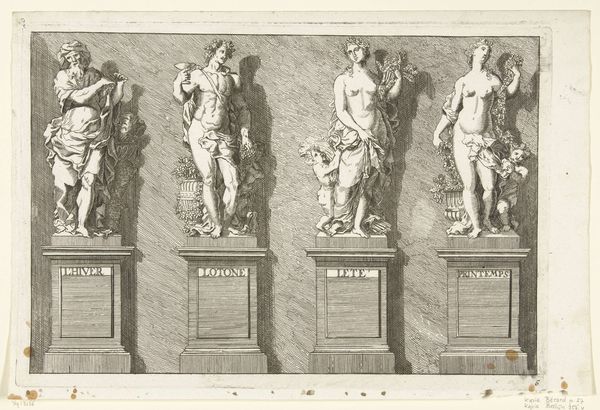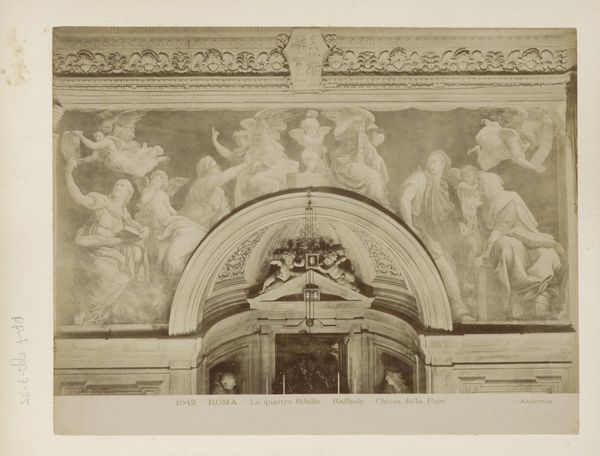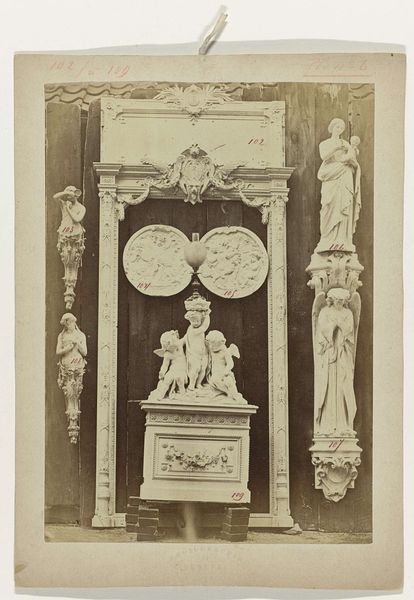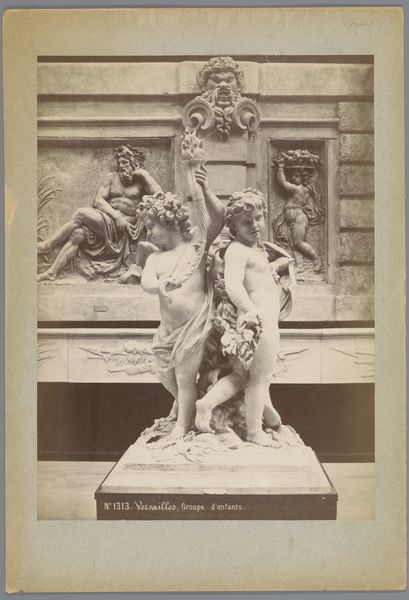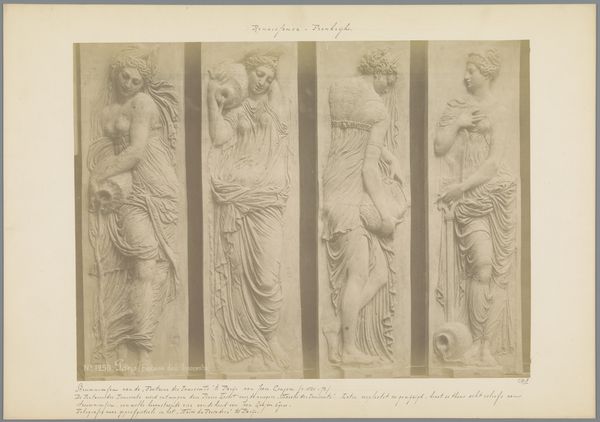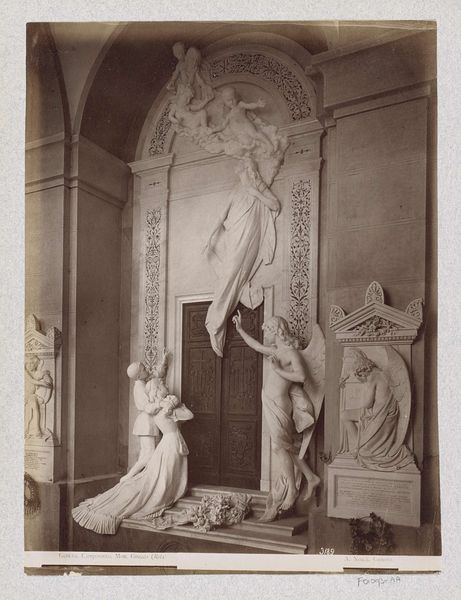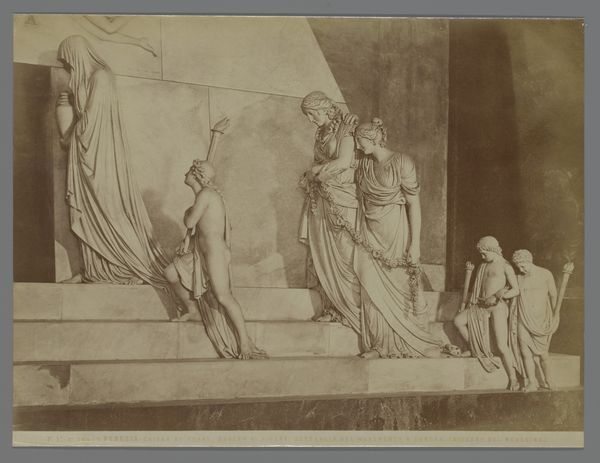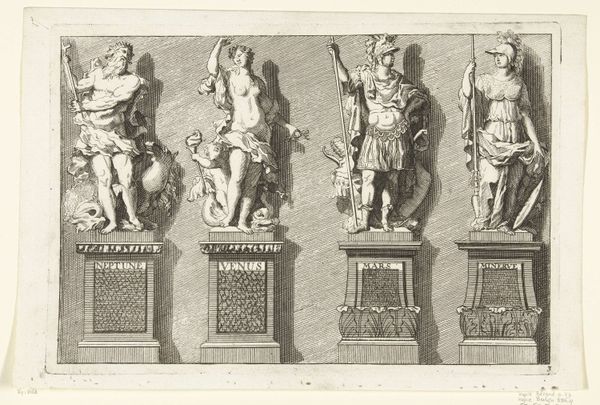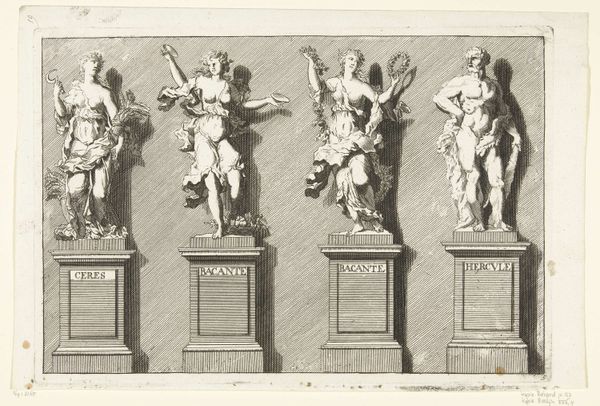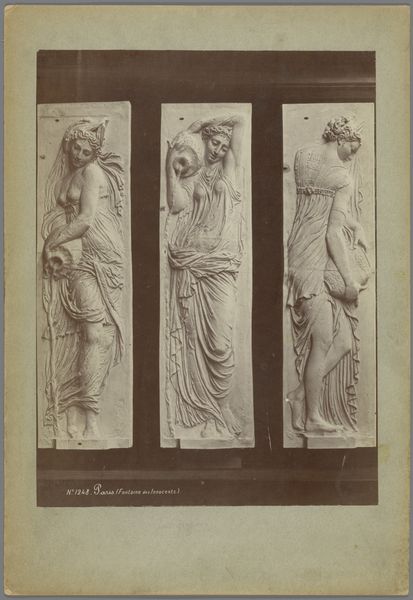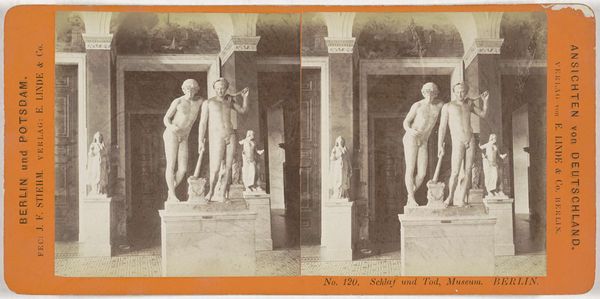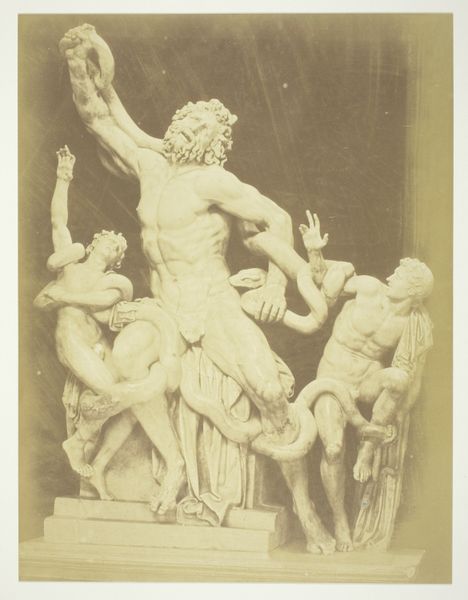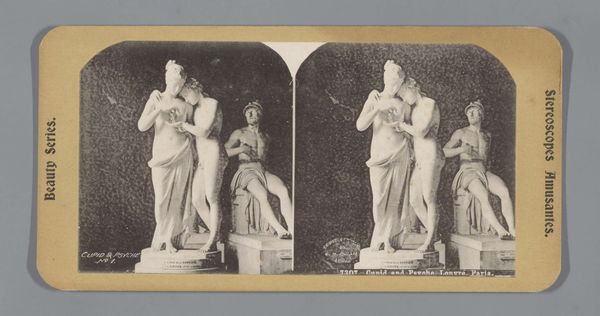
photography, sculpture, gelatin-silver-print
#
portrait
#
neoclassicism
#
photography
#
coloured pencil
#
sculpture
#
gelatin-silver-print
Dimensions: height 86 mm, width 176 mm
Copyright: Rijks Museum: Open Domain
Curator: This is a photograph from 1876, a gelatin-silver print titled "Sculptuur van Venus en Cupido in het Marmorbad te Kassel" by Sophus Williams. Editor: It has a beautifully muted tone. The repeated statuary creates a compelling rhythmic pattern, like visual echoes frozen in time. Curator: Indeed. Williams captured the sculpture within its setting, a marble bathhouse, likely for documentation or as a collectible souvenir of this historical location. The photographic print served a broader public's access to classical forms. Editor: Focusing solely on form, there’s a clear hierarchy. Venus is dominant, almost regal in her stillness, while Cupid clings to her—dynamic in contrast. Look at the drape of Venus' gown, cascading downward, echoed by the gentle slope of Cupid’s back. The lines guide the eye seamlessly. Curator: Absolutely. Notice how Neoclassicism sought to revive an idealized vision of antiquity in the 19th century. Photography enabled wider dissemination of art and ideals linked to classical culture. Wealthier individuals on tour may have procured such imagery to reinforce cultural values. Editor: I hadn't considered it as a memento, or a method of disseminating ideology. Still, from an aesthetic viewpoint, I find it captivating how the light gently molds their figures. The photographer must have carefully controlled illumination, as they are evenly lit, which minimizes harsh shadows and softens all details. Curator: It raises the question about originality. Is it about documenting artwork, or re-interpreting Neoclassical ideals through photography? Consider the photograph’s existence: art capturing art for different socio-economic motivations. Editor: Hmm, well from my side of things, all its about the tone that sets this photo apart, a feeling that transcends both the era of its creation, as well as what it portrays. It's quiet; thoughtful. Curator: It speaks to the enduring interest in re-evaluating our links to history, our own and others, as time progresses.
Comments
No comments
Be the first to comment and join the conversation on the ultimate creative platform.
